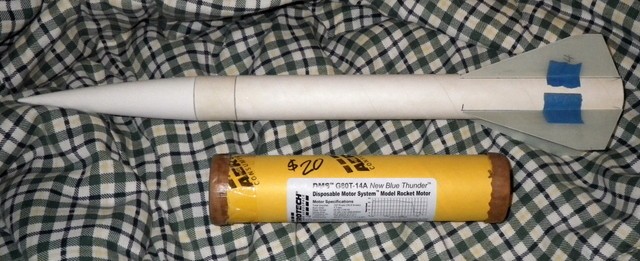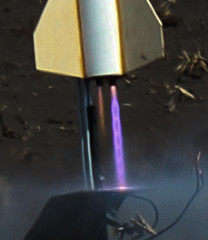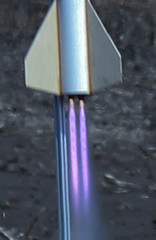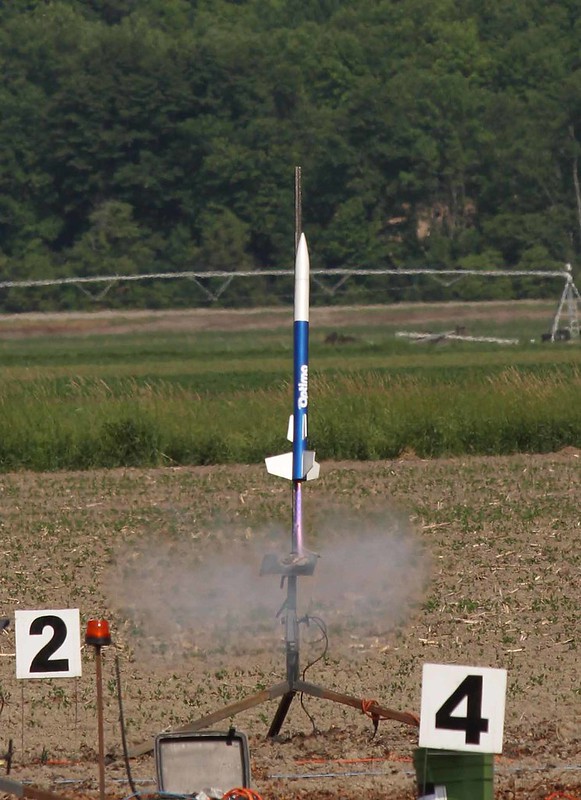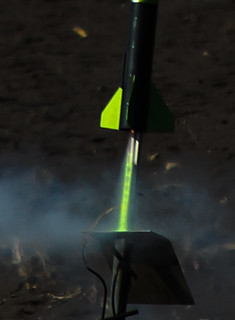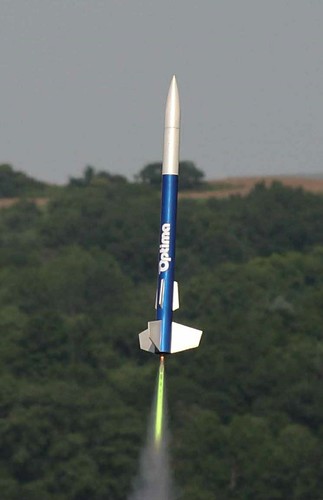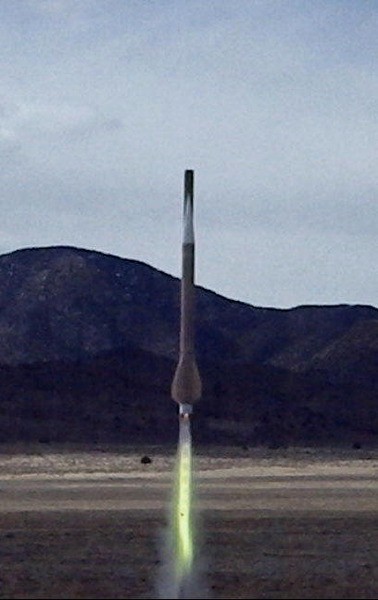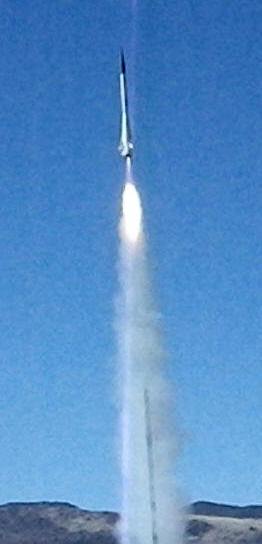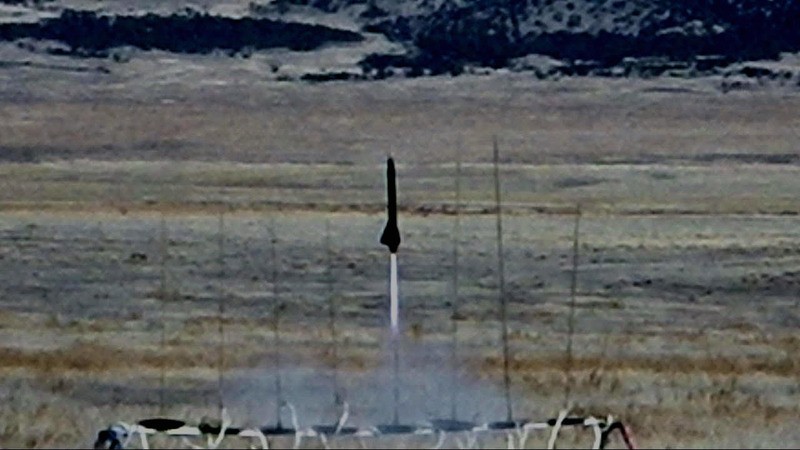A few comments on the premise for the question:
Both composite and BP motors have supersonic exhaust streams. A typical Isp for BP, for example, is 80 lb*sec/lb. That corresponds to an effective exhaust velocity of about 2600 ft/sec – supersonic. You would likely see Mach diamonds in the exhaust, except that it’s full of smoke and charcoal particles. Composite motor exhaust streams are two or three times as fast. You can probably see MD’s in the exhausts of Blue Thunder motors, which are relatively clear.
Also, in principle, you don’t require a supersonic exhaust stream to have a supersonic rocket. Think about it. If you can have an exhaust stream that travels faster than the rocket, why can’t you have a rocket that travels faster than the exhaust? In free space, the DeltaV supplied by a rocket motor is given by the Rocket Equation:
DeltaV=EffectivExhaustVelocity*Ln(LaunchMass/BurnoutMass)
The argument of the natural logarithm (Ln) is called the Mass Ratio. In free space, you need a mass ratio of about 2.7183 for a rocket to reach the speed of its exhaust gasses. At higher mass ratios, rockets in free space can exceed the speeds of their exhausts.
Rockets on earth can exceed the speeds of their exhausts, but mass ratios must be higher, and there are also thrust-to-weight ratio requirements – all because of gravity and drag. Those are huge requirements for a model rocket – but they are unnecessary to break Mach 1, given the propellants we use.
Not sure if any of that was productive, but there it is...
Best Regards,
-LarryC





